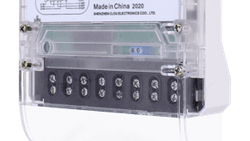The electric grid is like a huge, interconnected web that delivers electricity from power plants to homes and businesses. This complex network needs to be really sturdy and reliable, because even small issues can lead to big economic impacts or safety risks. The grid's resilience – its ability to withstand and bounce back from challenges like severe storms, cyberattacks, or other surprises – is crucial. As the grid starts using more renewable energy from solar and wind, making it more resilient is more important than ever.
This is where Energy Storage Systems (ESS) come into the spotlight as a key way to boost grid resilience, especially when they're built right into transmission networks. Transmission networks are like the backbone of the grid, carrying high-voltage electricity long distances before it gets stepped down for distribution. Putting ESS directly into these transmission lines improves resilience in several key ways.
- ESS provides frequency regulation and voltage support services that stabilize the grid during disruptions and prevent outages from cascading. By reacting within milliseconds, ESS can smooth fluctuations and maintain reliability when generation ramps up or down.
- Transmission-scale ESS enables grid operators to strategically control power flow, redirecting electricity around damaged components during emergencies. This islanding capacity compartmentalizes failures and prevents regional blackouts.
- ESS provides reliability reserves that can quickly discharge electricity in the event of a sudden generation loss. This avoids the need to power down customers.
- Pairing renewable energy with ESS overcomes intermittency issues. Storage charges when renewable output is abundant and discharges when it drops off, enabling consistent delivery.
- ESS enables greater network flexibility through multifunctional operation. A single asset can stack applications like frequency regulation, load shifting, and outage mitigation.
Grid-scale ESS comes in a variety of battery technologies tailored to transmission needs. Lithium-ion batteries offer versatility and rapid response times, while flow batteries provide enormous capacity for long-duration discharge. Emerging technologies like compressed air and thermal storage also show promise. The scale of transmission systems requires ESS with substantial capacities, typically ranging from tens to hundreds of megawatts. Moreover, by aggregating multiple installations, these systems can collectively achieve capacities in the gigawatt range.
Strategically locating ESS in transmission networks maximizes resilience based on system vulnerabilities. Placing storage near urban load centres prepares for disruptions in densely populated areas. Siting storage near interfaces between regional grids equips operators to isolate failures. Reserves near critical generation prevent cascading outages if large power plants abruptly go offline. Optimal ESS siting requires advanced modelling of transmission contingencies and resilient reconfiguration under evolving conditions.
The policy landscape is shifting to support resilient transmission networks. Grid storage received a major boost in the U.S. with FERC Order 841, which directs regional operators to establish market rules for energy storage participation. Policies that enable multiple value streams from individual projects improve ESS cost-effectiveness. Looking globally, leading storage markets in Europe, Asia, and Australia will provide models for grid modernization.
Takeaway
The integration of Energy Storage Systems (ESS) into transmission infrastructures is more than just a technical upgrade; it's a strategic enhancement that promises enhanced resilience against a range of disturbances, from natural disasters to technical failures. By providing critical services like frequency regulation, voltage support, and emergency power supply, ESS not only safeguards the grid but also ensures a more reliable and consistent power supply. As policy frameworks evolve and technology advances, the strategic placement and innovative use of ESS across transmission networks will play a pivotal role in shaping robust, future-ready electrical grids.
The continued adoption and integration of these systems underscore a commitment to both economic stability and national security, ensuring that communities thrive even in the face of unforeseen challenges.
If you have any inquiries or need further information about our energy storage systems and their role in power-grid infrastructures, please do not hesitate to reach out to us. We are here to assist you and welcome your valuable thoughts and comments.
Until then, keep shining bright like a solar panel on a sunny day!






All comments are moderated before being published. Inappropriate or off-topic comments may not be approved.